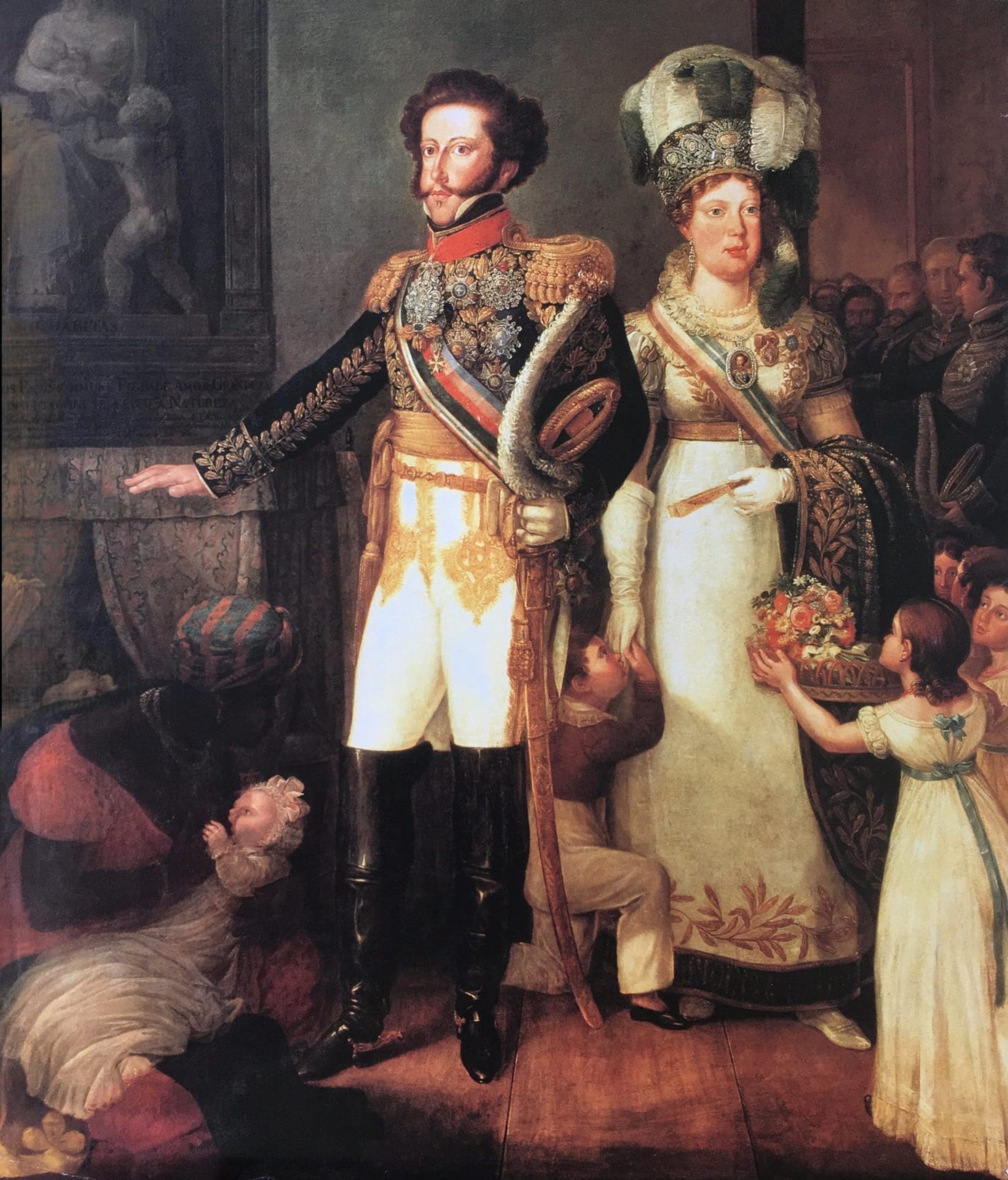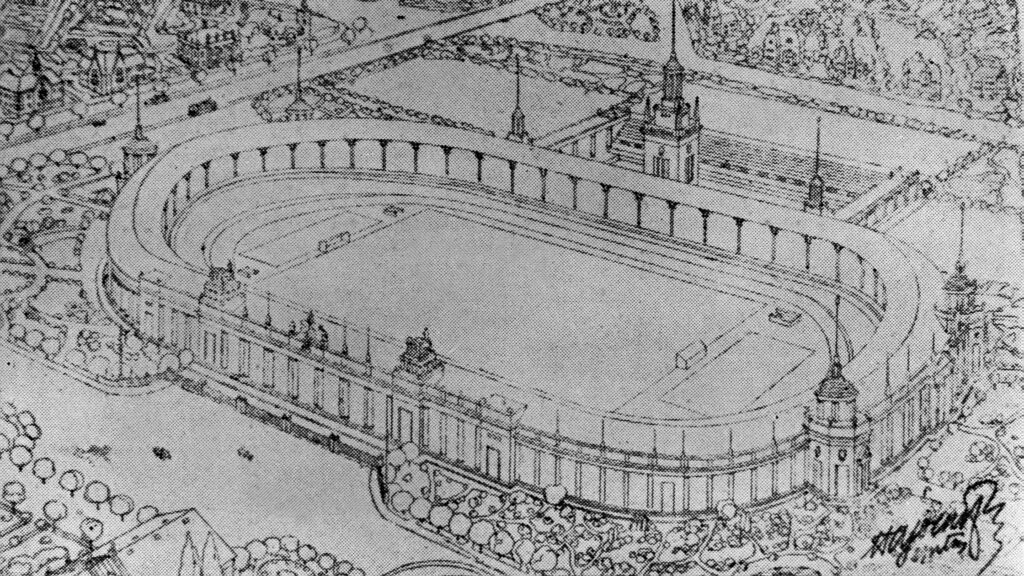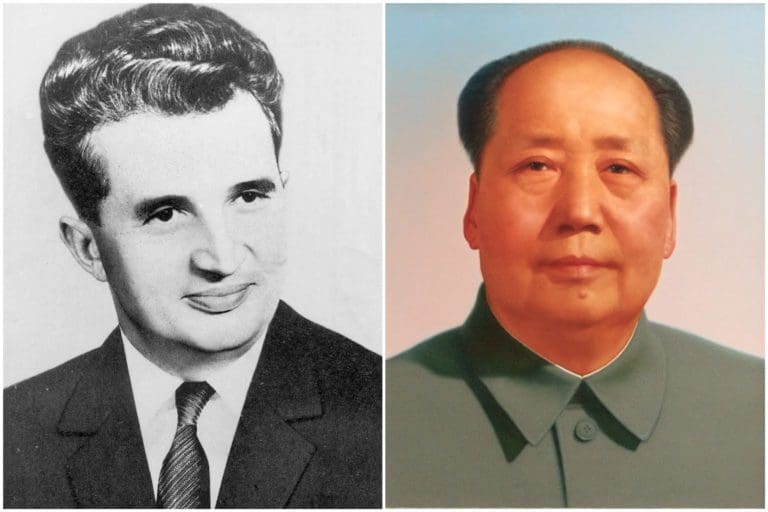‘Lege et Fide’
‘Hungarians! The whole of Europe is watching you now. You identify all your glory and happiness in your ancient Constitution, and I proudly use the title King of Hungary. Let us be very proud of being Hungarians, let us guard and preserve this noble tradition of your honourable nation, and let us do everything to secure the happiness of your homeland forever.’ – Francis I of Austria, Diet of Pressburg, 1808
Introduction
But what is the Hungarian connection, you may ask. Well, a good part of the imperial and royal family had spent the summer of 1809 in Hungary as “refugees” and guests of the archbishop of Eger, following the Napoleonic occupation of the imperial capital, Vienna. We can notice that if the Hungarians had not supported the Habsburg dynasty during the French Revolution (1789–1799) and later during the Napoleonic Wars (1799–1815), the Habsburgs might not have been able to preserve their power in Central Europe, so the archduchess might never have married Dom Pedro of Bragança, and thus become the future Empress consort of Brazil. But the Hungarians did save the thrones of the Habsburgs in Central Europe during the Napoleonic Wars, as they had done before, during the War of the Austrian Succession (1740–1748). So there is an indirect connection–through the person of Leopoldina–between the pro-Habsburg attitude of the Hungarian nation and the independence of Brazil, where the process of separation was not against the royal family, on the contrary, it was prompted by them. The golden and green colours of the flag of Brazil (Auriverde) symbolise the respect towards the two dynasties: the gold for the Habsburg and the green for the Bragança house. Part I of this study attempts to offer an overview of the legal and political position of the Habsburg dynasty in Hungary during the Napoleonic Wars, the constitutional system and the political situation in Hungary, the reason for the pro-Habsburg attitude of the Hungarian nation, and particularly the residing of the imperial and royal family in Eger. Part II analyses the key role of Archduchess Maria Leopoldina in the process of the independence of Brazil, as well as her attitude to the conflict.
The House of Habsburg and the Kingdom of Hungary During the Napoleonic Wars
The end of the 18th and the beginning of the 19th century was the time to restore the harmony between the Habsburgs and the Hungarian nation. Before the coronation of Leopold II, the Holy Crown was brought back from Vienna to Hungary, and its permanent guarding place was designated in Buda; earlier, Joseph II had unlawfully ordered that the Holy Crown be taken from Pressburg to Vienna. The convening of the Diet once in three years was required again– the last Diet was held in 1765– and the authority of the monarch was clarified in the executive and legislative power.[11] The old independence of the judicial power (Royal Curia of Hungary) was thus restored.[12] The Diet declared the restoration of the territorial integrity of the Kingdom,[13] of the former authority and jurisdiction of the ancient institutes of the Hungarian government,[14] such as the Royal Council,[15] the Count Palatine,[16] the Primate[17] or the Ban of Croatia.[18] Although the use of the Hungarian language in the public administration was reclaimed by many, they finally decided to restore the use of Latin instead of the German which Emperor Joseph II had illegally imposed.[19]
Following the restoration of the good relations, the rhetoric of the Austrian monarchs concerning Hungarians became decidedly positive; for instance the letters written by Leopold II to his twice brother-in-law, Ferdinand I of Naples he uses such laudatory phrases as ‘My good Hungarians’, or ‘brave nation’, just as the Neapolitan monarch refers to them as ‘worthy Hungarians’ and ‘valiant Hungarian nation’ in his answers.[20] Leopold II died unexpectedly in March 1792 and was succeeded by his eldest son, Francis (1792–1835) in a smooth transition. The new monarch wanted to express his goodwill toward the Hungarian nation: he clarified the ambiguous parts of the Inauguration Letter in which the monarch promises to observe the constitution, laws, customs, privileges of the country and the rights of the nation, to protect its territorial integrity etc.[21]
In the same summer, he was crowned king of Hungary in Buda.[22] Francis feared the consequences of the possible expansion of the French Revolution–provoked and led by the freemasonry– in Europe. His aunt, Archduchess Marie Antoinette (Queen consort of France) was executed (1793) by the Jacobin freemasons. It is well known that Emperor Joseph II was one of the greatest friends of the freemasonry in Europe,[23] but after the radicalization of the lodges and especially after the escalation of the chaos in France, the Habsburgs imposed increasing restrictions on these secret societies. In Hungary, patriotic aristocrats and nobles like Count Esterházy, Count Széchenyi, Count Batthyány and many others, were masons, who wanted to serve the interests of the country and to defend the constitutional order against the illegal acts of the feudal absolutistic policy of the Habsburg administration.
After the French Revolution, however, they suspended their activity, and left the masonry immediately (1789) to demonstrate that they did not agree with the radicalised movement.[24] The execution of Louis XVI of France and Marie Antoinette caused a real shock in Vienna. The known members of freemason societies were removed from public offices, and later were persecuted by the authorities. After the Martinovics Conspiracy[25] (1794), on the urging of Archduke Alexander Leopold, the Count Palatine of Hungary, the monarch decided to ban freemasonry altogether (1795) both in Austria and in Hungary.[26] Next year (1796), Francis convoked the Diet and in his invitation letter he talked openly about the threat posed by freemasonry, and his admonition remained part of the passed Act:
‘This time we should act and do everything to secure our royal throne, the keep of the ancient constitution of the country, the protection of the rights and privileges of the nobility, the preservation of the religion against all aspirations which want to terminate the constitutional order and the Christian religion.’[27]
The reaction from the part of the Hungarian estates was positive:
‘The Status et Ordines offered their life and blood (Vitam & Sanguinem) to defend the king and his House (Augustae Domus), the dignity of the country and the ancient Constitution (avita ejusdem Constitutione).’[28]
One can see that the policy of the Habsburg administration during these decades focused on three main objectives in Hungary: to secure the stability of the Monarchy and the royal throne (defence), to observe and conserve the constitution, and to defend the Christian religion. These aspirations coincided with the interests of the Hungarian estates. Francis followed the pragmatic policy of his father in Hungary, the strong and flexible cooperation with the Hungarian nation, and in exchange the Diet passed the budget and voted in favour of conscription laws.[29] Between 1792 and 1812 seven Diets were held,[30] exactly the same number as during an entire century before (1688–1790).[31] The first half of Francis’ reign was spent in the shadow of the escalation of the French Revolution and the Napoleonic Wars.[32]
Napoleon had been pressing Francis to dissolve the Holy Roman Empire for years, and finally forced him to do so in 1806, and from that point onward Francis started to use the hereditary title Emperor of Austria, which made him a so-called “doppelkaiser” (double emperor). Royal families were removed by force throughout the continent. When Portugal was invaded in 1808, the House of Bragança decided to escape from Lisbon to Rio de Janeiro.[33] Of course, the Habsburgs could not keep Austria and Hungary out of the conflict, as both Napoleon and Francis considered each other their mutual arch enemies.[34] After the French troops had invaded Austria again (1809), Napoleon tried to get the Hungarians to rebel against the Habsburgs. A political Proclamation was issued to the Hungarian nation from the Schönbrunn Palace in Vienna to incite a rebellion:
‘I do not want to ask anything from you, I just want to see you becoming a free and truly independent nation. The main reason for your disgrace was the union with Austria; your blood, your goods were sacrificed for the well-being of the Hereditary Lands of Austria. Let’s be again who you were before, let’s regain your own national being. Let’s elect a monarch who lives in your country. You should not fight for weak rulers anymore who are totally controlled by corrupt ministers, ministers who are paid by England, this common enemy of Europe, who based her own well-being on monopolistic trading and creating conflicts between us.’[35]
So the bilateral relationship which had deteriorated during the second half of the reign of Queen Maria Theresa, but mostly under the illegal usurpation of Emperor Joseph II, was set right under Kings Leopold II and Francis. During the reign of Francis the use of Latin as the official language in public administration was confirmed, and so was the use of Hungarian in university education[38] which paved the way for its use in the sessions of the Diet and in public administration.[39] The Diet of 1808 supported the foundation of the Hungarian National Library (now called Széchenyi Library after its founder, Count Ferenc Széchenyi),[40] the establishing of the National Museum,[41] as well as the establishing of The Royal Hungarian Ludovika Defence Academy.[42] This last was named after Archduchess Maria Ludovika of Austria-Este–the third wife of King Francis–who contributed 50,000 Forints for its upkeep from the funds of the Honours list proclaimed at the Coronation, and several other members of the family also offered generous funding.
In conclusion, we can state with confidence that despite the numerous unresolved political and economic conflicts between the Hungarian estates, and the abuses of power by the imperial administration, during the French Revolution and the Napoleonic Wars the Habsburg dynasty and the Hungarian nation enjoyed the closest ties ever. King Francis remarked on that special bond in his speech at the opening ceremony of the Diet of Pressburg:
‘Hungarians! The whole of Europe is watching you now. You identify all your glory and happiness in your ancient Constitution, and I proudly use the title King of Hungary. Let us be very proud of being Hungarians, let us guard and preserve this noble tradition of your honourable nation, and let us do everything to secure the happiness of your homeland forever.’[43]
‘The convening of the present Diet and the presence of His Majesty here, his royal proposal to the Diet are the pure evidence that His Majesty does not want to act against the ancient Hungarian Constitution, he would like to respect it, to obey it faithfully and enforce it at all times. We are ready to sacrifice our talent and our life to protect our ancient Constitution against all enemies,’ responded Archduke Joseph of Austria, the Count Palatine of Hungary, on behalf of the Hungarian nation.’[44]
The Imperial and Royal Family in Eger (1809)
Eger was one the richest and most important ecclesiastical districts in the Kingdom of Hungary.[45] After its liberation from the Ottoman usurpation (1596–1687), the city was reborn during the peaceful 18th century.[46] It is very symbolic that the Pope promoted Eger to the rank of Metropolitan Archdiocese on the 800th anniversary of its foundation in 1804.[47] The city of Eger had been under the jurisdiction of (arch)bishops[48] since its early days. After the liberation of the city, a long line of bishops worked hard to restore its former glory, and to develop its economic, cultural and scientific life. Although Emperor Joseph II visited Eger various times on the invitation of Count Esterházy, the “enlightened and progressive” monarch, like Queen Maria Theresa before, consistently denied the warrant and consent required to establish a university in the city.[49] Nevertheless, all the iconic edifices of the city were built in those decades and by the beginning of the 19th century, Eger had become one of the most populous settlements in the country,[50] a perfect place to give refuge to the imperial and royal dynasty during the war. Due to the advance of the French troops in Austria in the spring of 1809, the imperial court decided to leave Vienna and move to Buda.
It was the second occasion within a few years that they were forced to flee. In 1805 the situation was very similar, although at that time they spent months in Kassa (now Kosice), the former seat of the bishops of Eger during the Ottoman period.[51] On 16 June, Empress and Queen consort Maria Ludovika arrived in Eger with her children, Archduke Ferdinand, Archduchess Marie Louise and Archduchess Maria Leopoldina. Archduke Karl Ambrosius joined them a few days later with Archduke Rudolph, and with the papal nuncio Count Severolli, and various members of the imperial and royal court. In July, Archduchess Maria Clementina, Archduchess Maria Caroline and Archduke Francis Karl also travelled to Eger, where the Holy Crown was brought from Buda.[52] Although Empress and Queen Consort Maria Ludovika left the city in July, the children remained in Eger. The archbishop of Eger did his best to make the stay of the imperial and royal family in the city enjoyable by organizing trips to the nearby mountains and the surrounding villages, holding festivals and dinners in various vineyards, and hosting banquets and dances in the Palace for the illustrious guests. The first communion of Leopoldina was also in Eger and here she started to learn Italian. In September, Archduke Karl Ambrosius died unexpectedly; he had visited soldiers in hospitals before and was infected by typhoid fever. The stay of the imperial and royal family in Eger was well documented in the letters written by Marie Louise. The Peace Treaty of Schönbrunn[53] was signed by Francis in the Esterházy Palace in Tata in 1809, and a year later Napoleon forced Francis to let him marry Francis’ eldest daughter, Marie Louise…[54]
Zoltán Attila Liktor (PhD)
[1] ‘O Cristo Redentor Iluminado Com As Cores da Hungria’, Braziliavaros.mfa.gov.hu, https://braziliavaros.mfa.gov.hu/bra/news/magyar-szinekkel-vilagitottak-meg-a-rioi-megvalto-krisztus-szobrat, accessed 6 April 2022.
[2] ‘Presidente Jair Bolsonaro faz visita official à Hungria’, (17 Feb. 2022), gov.bra, https://www.gov.br/planalto/pt-br/acompanhe-o-planalto/noticias/2022/02/presidente-jair-bolsonaro-faz-visita-oficial-a-hungria, accessed 6 April 2022.
[3] H. Vander Linden, ‘Alexander VI and the Demarcation of the Maritime and Colonial Domains of Spain and Portugal (1493–1494),’ The American Historical Review, Vol. 22, No. 1 (1916), pp. 1–20.
[4] Vilmos Fraknói, Rodrigo Borgia (VI. Sándor) Giulio Medici (VII. Kelemen) és Ascanio Sforza bíbornok, mint egri püspök-praetendensek, Eger, 1884.
[5] Péter Torbágyi, Magyar kivándorlás Latin-Amerikába az első világháború előtt, Szeged, SZTE Történettudományi Doktori Iskola, 2009.
[6] See Vilmos Fraknói, A Habsburg-ház első érintkezési Magyarországgal (1269–1274), Budapest, MTA, 1917.
[7] János Sára, A Habsburgok és Magyarország 950–1918, Budapest, Athenaeum 2000 Kiadó, 2001; A. J. P. Taylor, A Habsburg Monarchia 1809–1918 Az Osztrák Birodalom és az Osztrák-Magyar Monarchia története, Budapest, Scolar Kiadó, Budapest, 2011, and Géza Pálffy, Hungary between Two Empires (1526–1711), Bloomington, Indiana University Press, 2021.
[8] Tamás Dobszay, A rendi országgyűlés utolsó évtizedei (1790–1848), Országház Könyvkiadó (Budapest, 2019), 30.
[9] Dezső Márkus (ed.), Corpus Juris Hungarici – Magyar Törvénytár (1740–1835) [CJH.], Franklin (Budapest, 1901), Art. X of 1790.
[10] Gejza Ferdinandy, A koronázás és közjogi jelentősége, Budapest, Athenaeum, Budapest, 1893; pp. 2, 212–234; Gejza Ferdinady, A királyi méltóság és hatalom Magyarországon, Budapest, 1895; Ákos Timon, A Szent Korona elmélete és a koronázás, Budapest, Athenaeum, 1920.
[11] CJH. Art. XIII of 1790.
[12] CJH. Art. XII of 1790.
[13] CJH. Art. XI of 1790.
[14] CJH. Art. XIV, XXXIX, LVIII of 1790.
[15] Győző Ember, A M. Kir. Helytartótanács ügyintézésének története 1724–1848, Budapest, M. Kir. Országos Levéltár, 1940.
[16] Norbert C. Tóth, A Magyar Királyság nádora. A nádori és helytartói intézmény története (1342–1562), Budapest, MTA BTK TTI, 2020.
[17] István Késmárky, Az esztergomi érseknek, mint Magyarország prímásának jogai és kiváltságai, Budapest, 1896.
[18] Ivana Horbec, ‘A felvilágosult abszolutizmus és a báni méltóság. Bevezetés a horvát–szlavón rendek politikájába (1756–1790),’ In: Pál Fodor – Dénes Sokcsevits (ed.), A horvát-magyar együttélés fordulópontjai Intézmények, társadalom, gazdaság, kultúra, Budapest, MTA BTK TTI, 2015, pp. 168–174.
[19] CJH. Art. XVI of 1790, ‘Henrik Hönich, Latin vagy magyar? A nyelvkérdés a diéta előtt 1790–91-ben,’ In: Tamás Dobszay – István H. Németh – József Pap – István Szíjártó M. (ed.), Rendi országgyűlés – polgári parlament. Érdekképviselet és törvényhozás Magyarországon a 15. századtól 1918-ig, Budapest–Eger, 2020, pp. 273–293.
[20] Diarium comitiorum regni Hungariae. Posonii (1792) pp. 91, 97.
[21] CJH. Art. II of 1792.
[22] CJH. Art. I of 1792, Márta Vajnági, ‘A magyar rendek az 1792-es koronázáson,’ in Rendi országgyűlés, pp. 209–229.
[23] Helmut Reinalter, Joseph II. und die Freimaurerei im Lichte zeitgenössischer Broschüren, Wien, Universitӓt Innsbruck, 1987.
[24] Lajos Abafi, A szabadkőművesség története Magyarországon, Budapest, Schmidl H. Könyvnyomdája,1900.
[25] Ignác Martinovics was a secret agent paid by Leopold II, but after Francis had ascended the throne he was dismissed, and he organized a conspiracy against the monarch, see: Márton Szilágyi, Elviselni az elviselhetetlent. A Martinovics-összeesküvés elítéltjeinek börtönvilága, Történelmi Szemle LVII (2015), 121–130.
[26] The decree remained in force in Hungary until 1867, but in Austria until the end of the First World War (1918), see A szabadkőművesség története Magyarországon, p. 415, Günter Kodek: Von der Alchemie zur Aufklärung: Chronik der Freimaurerei in Österreich und den Habsburgischen Erblanden 1717–1867, Wien, Loecker Erhard Verlag, 2011.
[27] CJH. Praefatio of 1796.
[28] CJH. Praefatio of 1796.
[29] CJH. Art. VI of 1792, Art II of 1796, Art. I of 1802, Art. I of 1805, Art. I-II of 1807, Art. II and VI of 1808, Art. I of 1812, István Szíjártó M., ‘A magyar rendek adómegajánlási joga és a 18. századi adómegajánlási rend kialakulása,’ Történelmi Szemle XLVI, (2004) pp. 241–295, István Nagy-L, A 34. magyar gyalogezred tisztikara a francia háborúkban (1792–1815), Budapest, Magyarságkutató Intézet, 2021.
[30] Béla Pálmány, A magyar rendi országgyűlések történeti almanachja 1790–1812, Budapest, Országház Könyvkiadó, 2019.
[31] István Szíjártó M., A 18. századi Magyarország rendi országgyűlése. Budapest, Országház Könyvkiadó 2016.
[32] József Zachar, ‘Háború, háború, háború…1792–1815,’ In: József Bana – Csaba Katona (ed.),Franciák Magyarországon, 1809 (I. kötet), Budapest-Győr, Győr Megyei Jogú Város Levéltára – Magyar Országos Levéltár – Mediawave Közalapítvány, 2010, pp. 15–35; Robert Goetz, 1805: Austerlitz: Napoleon and the Destruction of the Third Coalition, East Finchley, Greenhill Books, 2005; Christopher Summerville, Napoleon’s Polish Gamble: Eylau and Friedland 1807, Barnsley, Pen and Sword Military, 2006; John H. Gill, The Battle of Znaim: Napoleon, The Habsburgs and the End of the War of 1809, East Finchley, Greenhill Books, 2020.
[33] Jurandir Malerba, A Corte no Exílio: Civilização e Poder no Brasil às Vésperas da Independência, São Paulo, Companhia das Letras, 2000; Kenneth Light, A viagem marítima da família real: A transferência da corte portuguesa para o Brasil, Zahar, 2008; Laurentino Gomes, 1808: Como uma rainha louca, um príncipe medroso e uma corte corrupta enganaram Napoleão e mudaram a História de Portugal e do Brasil, Globo Livros, 2014.
[34] Sándor Domanovszky, József nádor élete I-II, Magyar Történelmi Társulat (Budapest, 1944), 215.
[35] Hadtörténelmi Levéltár, DKA-000330, Napóleon kiáltványa a magyar nemzethez (15 May 1809).
[36] Brian Vick, The Congress of Vienna: Power and Politics after Napoleon, Cambridge, Mass., Harvard University Press, 2014.
[37] Henry Montague Hozier, The Russo-Turkish War, Legare Street Press, 2021.
[38] CJH. Art. XVI of 1790, Art. VII of 1792.
[39] CJH. Art. IV of 1805. Of course before the Habsburg period, the language of the sessions of the Diet was Hungarian, but after 1526 the estates started to prefer Latin.
[40] CJH. Art of XXIV of 1807, Gabriella Somkuti, Az Országos Széchényi-könyvtár története 1802–1918, Budapest, Országos Széchényi Könyvtár, 2002.
[41] CJH. Art VIII of 1808.
[42] CJH. Art VII of 1808.
[43] Diarium comitiorum regni Hungariae. Posonii (1808) 39.
[44] Diarium (1808) 39.
[45] István Sugár, Az egri püspökök története, Eger, 1984; Béla Kovács, Az egri egyházmegye története 1596-ig, Eger, 1987.
[46] Imre Breznay, Eger a XVIII. században I-II, Eger, 1933; Béla Kovács, Agria recuperata. A töröktől visszafoglalt Eger újjáépítésének első évei, A Heves Megyei Levéltár forráskiadványai 13, Eger, 2006.
[47] István Horváth, Az egri egyházmegye rövid története, Eger, 2015, p. 8.
[48] Erzsébet Löffler, ‘Eger város jogi helyzete a török kiűzésétől 1854-ig,’Agria XVIII, Eger, 1981, pp. 85, 85–97.
[49] Tivadar Petercsák (ed.), Az egri Domus Universitatis és Líceum. Oktatás, tudomány, művészet 1763–2013, Eger, Líceum Kiadó, 2013; Péter Kiss, Az egri érseki Líceum történetéből, Eger, 2016.
[50] Lajos Nemes, Eger város önkormányzata 1687–1848, Tanulmányok Heves megye történetéből 16, Eger, 2001, p. 32.
[51] József Pap, ‘Egy sikertelen kultuszteremtési kísérlet. A Szent Korona és Eger kapcsolata 1809-ben,’ Acta Acad. Agriensis, Sectio Historiae XLI, (2013) pp. 201, 197–212.
[52] Oszkár Renn, ‘A magyar Szent Korona Egerbe menekítése 1809-ben’, In: Oszkár Renn (ed.), Egri séták nemcsak egrieknek, Eger, Egri Lokálpatrióta Egylet, 2010, pp. 61, 60–66.
[53] Erzsébet Szász, ‘Békességkötés: Lichtenstein János Herceg sk., Nompére Champagny Ker. Ján. sk,’ In: A schönbrunni béke: 1809. október 14, Szeged, 1992, pp. 5–11.
[54] A Habsburgok és Magyarország, p. 433.





